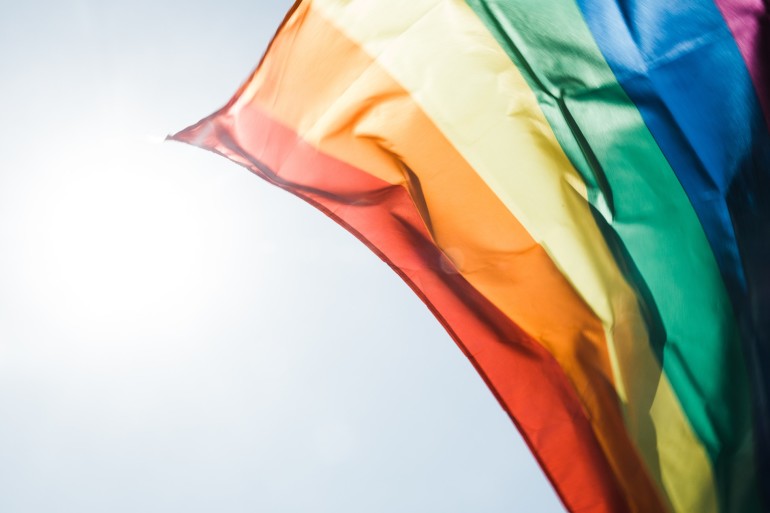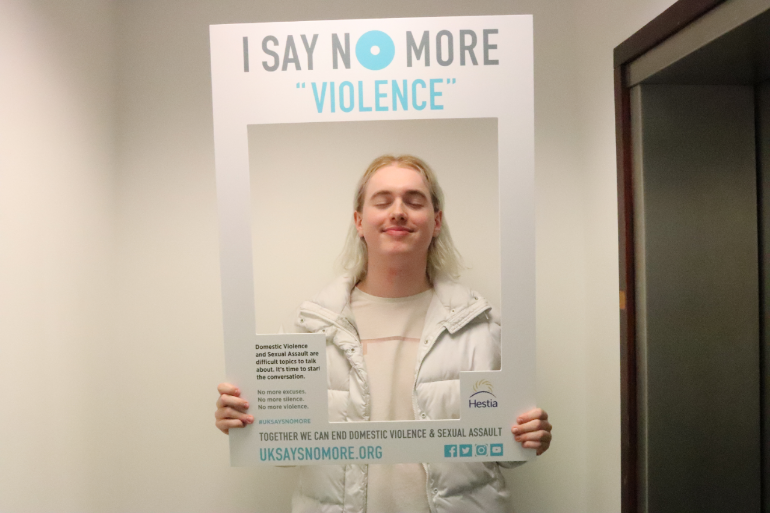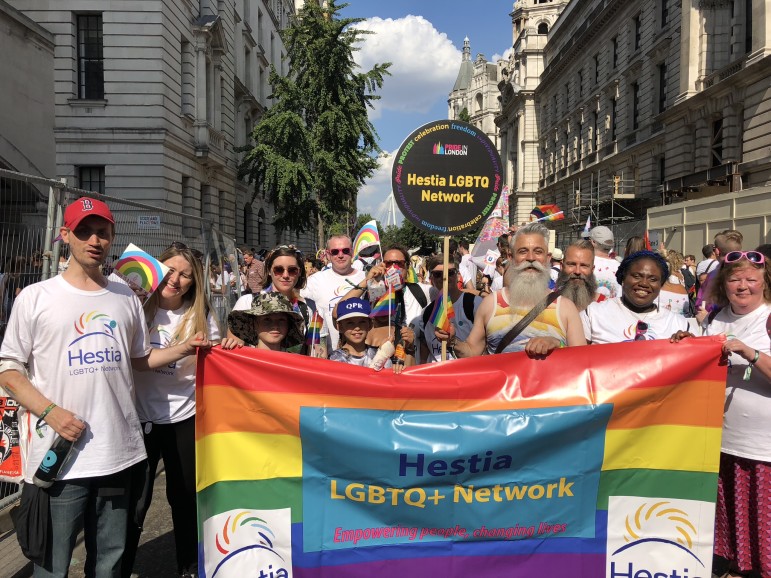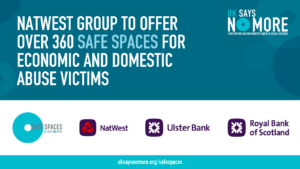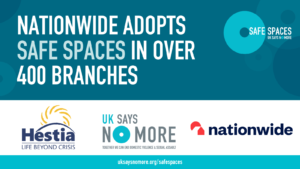As figures show, the LGBTQ+ community experience high levels of domestic abuse and sexual violence. But representation is woefully short
The fact that LGBTQ+ individuals experience domestic abuse and sexual violence at a rate equal or beyond their heterosexual/cisgender counterparts is no secret – but it’s certainly uncatered to. According to Stonewall, almost half of all gay and bisexual men have experienced at least one instance of domestic abuse, whilst The Scottish Transgender Alliance reports that around 80% of trans people have experienced some form of partner or ex-partner abuse.
In addition, a study by the Albert Kennedy Trust, reviewed by LGBT Youth Scotland‘s LGBT Youth Commission, revealed that 25% of homeless youth are LGBTQ+ and 69% of them had experienced violence or abuse in the home.
A quick Google or YouTube search alone reveals what we’re already well aware of. Whilst domestic abuse and sexual violence greatly affects the LGBTQ+ community, there is virtually no representation. No awareness. Figures and research available on the topic are scarce, mirroring the support available, and also highlighting an uncomfortable truth – the problem is still vastly underreported and continues to be misunderstood.
For those unwilling to disclose their sexuality or gender identity, contextualising their experiencing to friends, family or support services can be an incredibly daunting prospect. And one, sadly, that can see them decide not to report the abuse at all.
When this fear meets age-old bias and discrimination, or worse yet – is caused by it – report rates can lower even further. A lack of trust in institutions to handle their cases without judgement can prevent LGBTQ+ individuals from reaching out.
Further still, myths around domestic abuse and sexual violence in the community still prevail, with victims often fearful that their loved ones won’t believe them, or won’t take their experiences seriously. Myths of this nature have been perpetuated to such an extent in society that often LGBTQ+ victims of abuse and violence are unaware of what they’ve endured. There’s barrier upon barrier upon hurdle upon hurdle for LGBTQ+ individuals in seeking help.
What’s the viable solution? In honesty, there isn’t one. At least, not one quick, solid, one-size-fits-all solution. The LGBTQ+ community deserve and need a societal fix, not a band-aid on a bullet hole. But, in our quest to right the wrongs and build a system that works for all survivors of abuse and violence, the least we can offer them is the representation that will provide solace at least and help a victim identify their situation at best.
Experimental filmmaker Jamie Janković, who identifies as non-binary, says that their existence as a queer person shaped their experience with domestic abuse and sexual violence.
I was always frustrated by the fact that I had experienced domestic abuse and sexual violence within a same-sex relationship, but I had never seen that anywhere in the media. Whenever I saw any domestic abuse storyline, it would be a straight couple. It would never reflect what I went through.
Jamie’s frustration is shared by hundreds of thousands of LGBTQ+ people around the world, who feel that equal representation is ignored and their experiences erased. If rates of domestic abuse and sexual violence within the community are high, you’d be forgiven for expecting this to be reflected in the media.
But is this lack of representation the result of the LGBTQ+ community still being treated as second class citizens, or is it entrenched even deeper? Is it because the typecast image of an abusive relationship still remains as it always has been, between an aggressive, violent man and a vulnerable, defenceless woman? A mixture, is the likely truth. But part of that truth is a simple lack of awareness of the extent of the issue.
Anything outside the overused domestic abuse stereotype often fails to be reflected in mainstream media. In the case of abusive LGBTQ+ relationships, these stories are pushed to LGBTQ+ media, pushing the ‘niche’ into a corner and offering them less significance than the other, more ‘typical’ stories. And so, the cycle begins.
The importance of campaigns like UK SAYS NO MORE, as well as other charities and organisations such as Galop, ManKind and Survivors Manchester cannot be underestimated. As these organisations grow, so does the opportunity to bring the issue to the public eye, and break down stereotypes. Bridges are built, connections are made, and we’re able to encourage the mainstream media to take a closer look. It gets better by listening to survivors and working together to right what is currently wrong.
It’s not just mainstream media that matters either, as Jamie’s art demonstrates. If we can galvanise members of the public to mould the media and raise awareness – be it through film, TV, books, music – we’re on a winning streak.
Take ‘The Rape of Recy Taylor’, released in cinemas a matter of months ago. The documentary tackles the prevalence of sexual violence against women of colour, both in the past, but also highlighting its prevalence in society today. As timely as possible, the film reminds us that injustice isn’t just confined to the history books.
These art forms are a phenomenal platform to advocate for social change.
It’s nice to exist in the world seeing media versions of things that you’ve gone through. It’s why people listen to music – to cry, dance or feel any type of emotion. You want to feel or see something that you can connect to.
As Jamie points out, it’s about not feeling alone. It’s about knowing that, even in your lowest lows or your highest highs, there’s someone else out there who gets it, and there’s support available too.
If you don’t have representation, people feel disconnected or isolated. When you do see it, it’s cathartic. It’s comforting to know you’re not alone.
The media is the modern day opium of the masses. If we can reach it, we’re getting somewhere.
The barriers upon barriers, the hurdles upon hurdles; they’re not easy to swipe away. But representing these issues is a start.
If you’re delivering a support service that works with LGBTQ+ survivors of violence and abuse, remember – words matter. The questions you ask, or the questions you don’t ask, can make all difference in an individuals recovery. If the right questions are missed, the opportunity to provide the most appropriate and beneficial support may also be missed. Think about and try to understand their individual needs, and how their sexuality or gender identity may play a role in their unique experience.
If you yourself aren’t an artist or delivering a support service, not to worry – there are other ways you can advocate for change. In lobbying for diverse representation, you’re setting a standard that all media platforms will, over time, have to adhere to. We’ve seen it with films, with criticism of cisgender individuals playing transgender characters and these actors stepping down (i.e Scarlet Johansson dropping out of drama Rub & Tug following backlash). Fighting for change really does work.
Another #WhatICanDo example to rally for representation is to get behind those platforms already making that change. Support the media outlets that are doing LGBTQ+ stories of violence justice. Retweet them. Post them. Send them good comments. Let others know that hey, this platform is doing great things and we should all be getting behind it. Preventing domestic abuse and sexual violence and changing the dialogue really is on all of us.
We’re far off a perfect solution, but by working together we can get there eventually. We can see the mainstream media treat LGBTQ+ survivors with dignity and respect, and with the accurate representation they deserve. We can dismantle myths and rid ourselves of assumptions. We can prevent jokes about domestic and sexual violence, and alter the view that certain cases of abuse or violence matter more or less than others.
Here at UK SAYS NO MORE, we’re working to ensure that representation of LGBTQ+ survivors of domestic abuse and sexual violence is met, and transforms into inclusivity. Through our current and soon-coming LGBTQ+ partners, we’ll be working on blogs, podcasts, webinars and PSAs to ensure that the gap between the media, stigma and stereotypes is bridged, and the community is represented in a fair and equal light.
Listen to Jamie’s podcast with us in full here:
Read More
– Why we need to talk to young people about pornography.
– Terry Crews Talks Toxic Masculinity, Sexual Assault and Standing Up For Survivors
